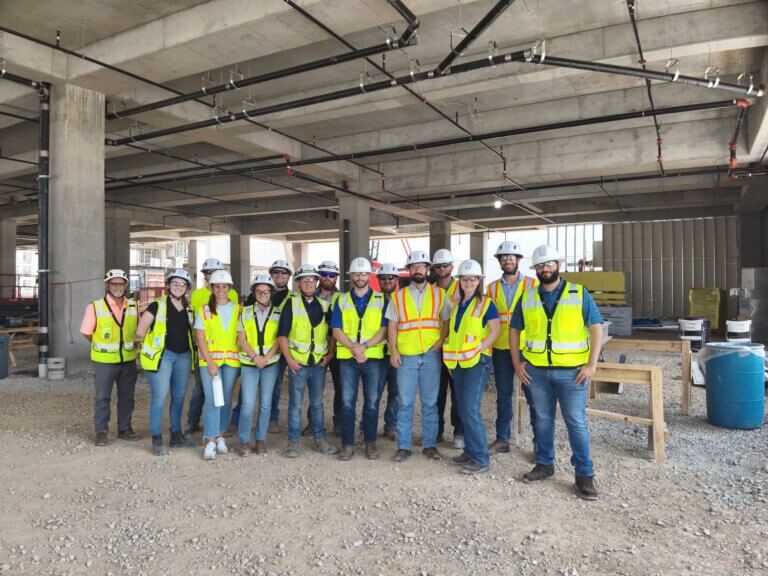
This article originally appeared on Construction Superintendent.
3 key areas to keep top-of-mind when planning for the unpredictable
By Turner Burton
While overall market conditions may seem unpredictable, the 2024 construction landscape is full of innovation and adaptability, and there is still optimism for our industry. According to Dodge Construction Network, the overall value of construction starts is expected to rise 7% in 2024. Ongoing challenges are expected, but the expansion of technologies and out-of-the-box creativity within the industry has maintained a sense of normalcy and resilience despite headwinds.
Some factors going into 2024 remain the same as they have been over the past couple of years. Development across the Sun Belt remains the strongest, particularly in Texas, Tennessee, the Carolinas and Florida. Long-term optimism within multifamily is strong, but financing has been difficult in the short-term. This is inspiring developers to get creative and pursue flexible housing options over traditional builds. Supply chain issues and labor shortages are still present, but leaders have learned the specific nuances of how to avoid detrimental impacts of these setbacks.
Below are three key areas that superintendents and their teams should keep top-of-mind when planning for 2024, relating to some of the top challenges and opportunities within the construction industry.
1. Adaptive renovations keep pipelines afloat
Adaptive reuse, aimed at improving the functionality of a building, has become more common in commercial construction within the past decade. In 2024, adaptive renovation projects will continue to see an increase in markets across the country as sluggish market dynamics compel property owners to contemplate upgrades to existing assets for competitive sustainability. Overall, we have seen the most renovation projects in the student housing and higher education sectors. Multifamily remains a top sector within this category, as well; office building owners continue to test multifamily conversions. However, the majority of the active projects seem to be value-add renovations of existing multifamily buildings. As renovations increase, construction leaders should embrace the challenge that comes with adaptive reuse. The practice can breathe new life into aging developments and make the most of sectors that have struggled since the pandemic, namely office and some retail. It’s an opportunity for the industry to show its creative side and tap into an area of construction that may be new for teams.
2. Preplan to mitigate supply chain shortfalls
Material shortages will continue to plague our industry for the foreseeable future. To address these issues, leaders should utilize proactive preconstruction methods and diversified sourcing strategies to mitigate any bumps in the road on projects. At this point, showcasing genuine leadership involves successfully navigating through persistent shortages; this is achieved by recognizing the crucial significance of proactive planning, collaborating in advance with all trade partners and stakeholders and implementing contingency measures in case the worst-case scenario arises. When superintendents and other field leaders effectively manage extended lead times, track cost fluctuations and factor in long lead times into budget and timelines, projects are ultimately more successful in the long run. One way to cut down on lead times is to shorten the length of your supply chain by using domestic suppliers, which can save days or weeks and still remain within the allotted budget.
3. Expand your labor pool
On top of supply chain struggles, the construction industry has also been hit with a major shortage in labor. Today’s generation of top construction leaders and skilled workers is set to retire soon, while the pool of younger talent remains thin despite efforts to recruit more to the industry. Demand for general contractors remains at an all-time high, leaving companies scrambling to fill the empty gaps. In 2022, 91% of contractors reported difficulty in filling open positions, according to Associated General Contractors of America. These troubles will persist into 2024, and it is imperative that industry leaders understand what measures should be taken not only to keep teams staffed, but also how to lead a team effectively to earn the trust and respect that young talent requires. Proactively engaging and collaborating with trade schools, colleges and community organizations are some of the best ways to recruit young workers who may not be aware of the many career possibilities within construction. Consider establishing apprenticeship programs and training schools for high school graduates and nonprofit organizations, reaching demographics outside university career fairs. Diversifying your range of talent is the ultimate key to ensuring the right amount of skilled laborers to get the job done throughout the year. There is growing interest among women and young professionals of various economic backgrounds in seeking jobs within construction, whether out in the field or behind the scenes on the technical side. Remember this, and plan to tap into it even more in 2024.
Exploring new project types, planning ahead and widening the net of your labor pool are all tactics that can instill a sense of stability and adaptability in an unpredictable new year.
An ever-present bright spot is simply our people — from people out on the field — to people behind computers and those at the top who continue to work together to find creative solutions to ongoing challenges. This is what is needed to persevere and grow in 2024. Opportunities are still out there, even if timelines may be longer than before and budgets may be tighter. Over all of the uncertainty in what the next few years may hold, our people’s dedication is what will continue to push our industry full steam ahead.
Turner Burton is president at Hoar Construction.

